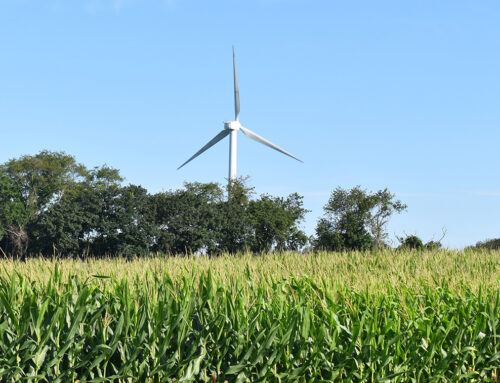Critics warn of higher costs from clean energy
November 25, 2024

BOSTON — New England states’ embrace of clean energy to reduce regional greenhouse gas emissions will drive up consumer costs, cause rolling blackouts and won’t provide enough electricity to meet demands, according to a new report by a coalition of right-leaning think tanks.
The report, released last week by the Massachusetts Fiscal Alliance, Americans for Prosperity Foundation and other conservative groups, projects that New England’s decarbonization plans would cost the states $815 billion collectively through 2050, with the average household paying nearly $100 more a year for electricity.
Commercial employers would see their costs rise by about $489 per year, while industrial manufacturing customers would see their electric bills increase by an average of almost $5,280 per year, according to the report.
Meanwhile, the report’s authors said ISO-New England, which which oversees the regional power grid, may not be able to provide enough electricity to power to meet base power demand in the next decade if the states don’t adjust clean energy mandates, warning that it could result in rolling blackouts and other disruptions.
MassFiscal spokesman Paul Craney said state lawmakers “have passed overzealous and unattainable, weather-dependent renewable energy policies that will hurt, not help, the residents of their state.”
“New England states should view Massachusetts as a cautionary tale for what not to do with energy policy,” Craney said. “These policies will also burden surrounding states that share our grid with crippling costs and blackout conditions. This isn’t fear mongering, this is future reality under our current laws. Course correction must be addressed swiftly.”
Massachusetts has set some of the toughest environmental regulations in the country with a goal of reaching “net-zero” greenhouse gas emissions related to 1990 levels by 2050. To meet those goals, the state has set a goal to generate at least 5,600 megawatts of offshore wind power by 2027.
In September, Gov. Maura Healey teamed up with Rhode Island on a regional plan that calls for producing a total 2,678 megawatts of offshore wind power spread across all three projects that submitted bids earlier this year. When completed, the three projects will be capable of providing enough electricity to power more than 1.4 million homes.
But critics say the plan and other clean energy mandates will ultimately saddle ratepayers and local governments with the costs.
“If Massachusetts persists in relying solely on weather-dependent energy sources like solar, wind, and batteries, residents can expect soaring energy costs and the looming threat of rolling blackouts,” Craney said. “The outlook is grim for the working people and businesses of our state alike, but entirely avoidable with the right policy changes.”
The state’s push to develop offshore wind comes amid increasing turbulence in the nascent industry. Some states and developers are scaling back — or in some cases backing out of projects — citing supply chain disruptions, higher construction costs and a lack of tax credits from the states and federal government.
Attorney General Andrea Campbell, a Democrat, has warned the Healey administration that pushing too quickly to switch to wind power “could lock ratepayers into massive long-term offshore wind generation contracts at a time when the cost of those contracts is at an unprecedented high.”
Christian M. Wade covers the Massachusetts Statehouse for North of Boston Media Group’s newspapers and websites. Email him at cwade@cnhinews.com.
Christian M. Wade covers the Massachusetts Statehouse for North of Boston Media Group’s newspapers and websites. Email him at cwade@cnhinews.com.
Search
RECENT PRESS RELEASES
Related Post


